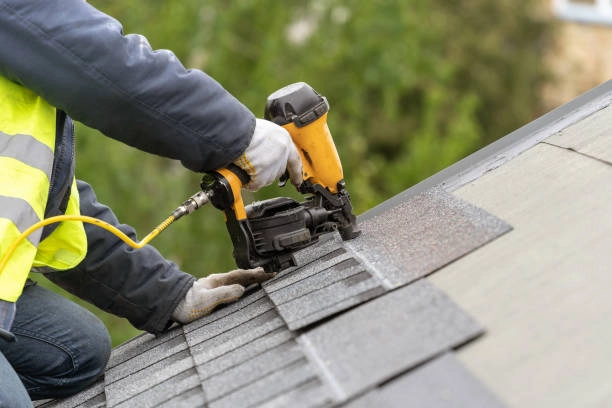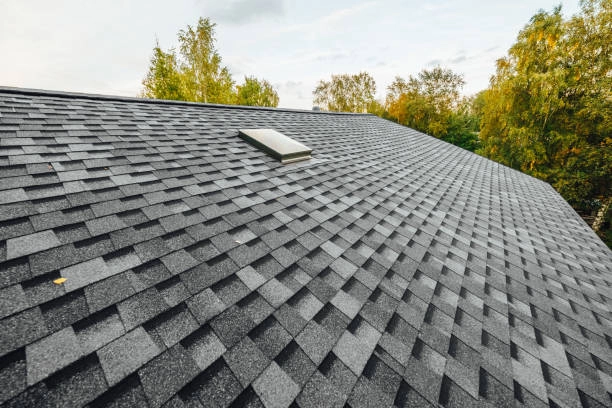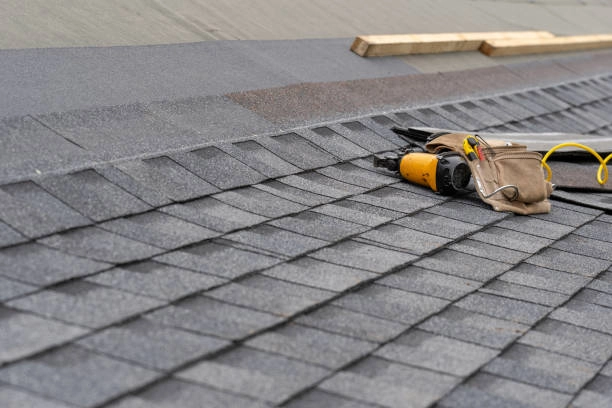Installing a tile roof is an excellent investment for any property owner, especially in regions like Phoenix, Arizona, where extreme weather conditions demand durable and energy-efficient roofing solutions. Tile roofs are known for their longevity, aesthetic appeal, and ability to withstand harsh elements. However, improper installation can lead to costly repairs and premature roof failure. This article will guide you through common tile roof installation mistakes to avoid, ensuring that your roof lasts for decades without unnecessary repairs or replacements.

Mistakes to Avoid for a Long-Lasting Roof
1. Choosing the Wrong Type of Tile
The first mistake that many homeowners make is the selection of the wrong type of tile for their roof. Tiles come in various materials, such as clay, concrete, and slate, each with its unique advantages and costs. It is therefore essential to choose the right material, as not all tiles are suitable for every home or climate.
For instance, clay tiles would be best suited to traditional or Mediterranean-style homes, and they withstand hot climates quite well. Concrete tiles are much cheaper but weigh more and will require more support in the structural framework. Slate tiles last long but are rather expensive, making tile roof installation a key consideration.
Consult with experienced tile roof contractors such as those at Gleason Roofing to guide you in the selection of the best tile material for your needs, which must be in alignment with your home’s architectural style and the local climate.
2. Poor Roof Preparation
Before laying a tile roof, the existing roof must be prepared. If flaws in decking, insulation, or older roofing materials are not remedied, issues can arise. For instance, if the existing foundation of the roof is not good, the tile installation will not be firm, and you may experience leaks or even tile slippage.
Ensure that the roof structure is in excellent condition before tile roof installation. This can include fixing or replacing damaged decking, proper underlayment, and ensuring that the roof is completely cleaned and ready for tile placement.
3. Incorrect Tile Installation
Tile roofing should be laid to precise alignment, and the tiles should be attached properly with suitable fastening during tile roof installation. Thus, they should be tightly fitted to be resistant to strong winds and extreme temperature conditions. Without the proper pattern, angle, or overlap while installing the tiles, it would lead to leakage, tile damage, and a shorter roof lifespan.
Hire experienced tile roof contractors familiar with the right methods of installing for your tile type. Gleason Roofing always installs tiles in a safe manner to secure them and keep your roof going longer.
4. Inadequate Ventilation
Proper ventilation is crucial for the health and longevity of your roof. If there is no proper airflow, heat gets trapped in your attic, leading to excessive moisture, which can cause mold, mildew, and wood rot. Poor ventilation can also affect the temperature inside your home, resulting in higher energy bills. During tile roof installation, ensure proper ventilation is included to prevent these issues.
Solution:
When installing a tile roof, it’s crucial to install the right ventilation system. Make sure the roof design includes proper intake and exhaust vents to allow airflow and prevent moisture buildup.
5. Using Low-Quality Underlayment
The underlayment is a critical component of tile roof installation. It acts as a waterproof barrier, protecting your home from leaks and water damage. Using low-quality or improper underlayment can leave your roof vulnerable to water infiltration, which can lead to costly repairs or roof tile replacement down the line.
Solution:
Use of good quality underlayment material like synthetic underlayment or felt paper having a high moisture resistance rating. This step is a very crucial one so that your roof stays waterproof and lasts for a long time.

6. Lack of Reinforcement to the Roof Structure
Tile roofs are much more heavy-duty, so the same house may feel the need to be reinforced against sagging and cracking or complete collapse. Many houses originally used lighter roofing that could be changed over to this type of installation with a couple of additional layers of reinforcement around the house during tile roof installation.
A consultation with a structural engineer or even your tile roof contractors may also be needed, in order to ascertain if any additional reinforcement on the roof will be required. Thus, it’s guaranteed that the house will take the weight and your new tile roof will also be safe.
7. Installing Flashing Inappropriately
Flashing is applied in areas of your roof where elements penetrate, for example, chimneys, vents, and skylights, to prevent water from entering your house. Poor flashing can cause leaks or water damage, resulting in costly repairs or tile roof repair in the future if not properly addressed during tile roof installation.
Make sure your flashing is put in the right place and aligned with the layout of the tile roof. Good flashing installation can keep water away from vulnerable places, especially where heavy rainfall or snow falls.
8. Neglecting to Seal Underlayment
Besides choosing the correct underlayment, it’s also important that all seals are applied correctly in tile roof installation. Gaps or poorly sealed underlayment may allow water infiltration, which can cause damage to the roof structure as well as to the interior of your home.
In order to ensure complete waterproofing protection on your house, we always go the extra mile at Gleason Roofing in sealing every inch of your underlayment area. The detailed attention is thus bound to help extend your roof’s life cycle.
9. Ignoring Roof Pitch and Slope
The steeper the pitch of your roof, the easier the water will run off; however, tile roofs are more challenging to install depending on the level of pitch of the roof. A roof that is too steep or too flat will often cause water pooling, and this often increases the risk of leaks and damage during tile roof installation.
Be sure to apply tiles based on the slope of the roof. In case the pitch of your roof is shallow, more protection measures might have to be carried out to prevent water from accumulating on top of the tiles. Seek to hire a company that knows about such details; one such example is Gleason Roofing.
10. Omitting Maintenance Practices
Tile roofs make low maintenance but require some upkeep over time. Neglecting to inspect and maintain your tile roof can lead to problems such as cracked tiles, debris buildup, and clogged gutters. It can cause long-term damage and lead to the need for premature roof tile replacement after tile roof installation.
Regularly scheduled roof inspections and maintenance by a reliable roofing contractor. It will catch any potential issues before they develop, saving you money and prolonging the life of your roof.

In conclusion, Tile roofs are wonderful options for people looking for strong, energy-efficient, and also beautiful roofing solutions. However, installation can only be perfect by giving due diligence in all activities that can potentially cause expensive blunders that shorten the life span of your roofing. To this end, preventing such installation blunders with experts such as at Gleason Roofing can provide assurance that it will be quite durable to be there for generations.
If you want tile roof installation in Phoenix or just need to repair your roof tiles, contact us today for a free consultation. We provide the highest level of service by our dedicated professionals who guarantee high-quality solutions based on individual requirements and client expectations.
Frequently Asked Questions
1. What are the most common tile roofing materials?
The most common tile roofing materials are clay, concrete, and slate tiles. Each material has different benefits. Clay tiles are durable and ideal for hot climates like Phoenix. Concrete tiles are more affordable, while slate tiles are expensive but extremely durable, making them ideal for high-end homes and historic buildings.
2. How much does tile roof installation cost?
The cost of a tile roof varies depending on the material and complexity of the roof. Clay tile roofs range from $700 to $1,200 per square, while concrete tiles are less expensive, costing between $400 and $800 per square. Slate tiles are the most expensive, ranging from $900 to $1,500 per square.
3. How long does a tile roof last?
Tile roofs last from 50 to more than 100 years depending on the material. The slate tiles will have the highest durability and normally over a century, and the concrete as well as clay tile last from 50 up to 70 years. If a tile roolasts f is properly serviced and maintained regularly, it extends the lifespan of the roof.
4. What is the importance of proper roof preparation before tile installation?
Proper roof preparation is the way to ensure that your tile roof installation is secure and long-lasting. The roof structure must be in excellent condition before roof installation, including fixing any damaged decking, applying proper underlayment, and making sure the roof is free of debris. This prevents issues like leaks and tile slippage.
5. Can I replace my old roof with tile roofing?
Yes, if your old roof is in a poor condition, then you can definitely replace the old roof by putting new tiles on it. Tile roofing in Phoenix AZ is durable and energy-efficient. Additional reinforcement may be needed to carry the heavier weight of the tiles. It is necessary to consult with experienced tile roof contractors to evaluate whether your roof is ready for tile installation.
6. How do I find reliable tile roof contractors in Phoenix?
To find reliable tile roof contractors in Phoenix, consider researching their experience, customer reviews, and past projects. A trusted contractor should provide transparent pricing and detailed estimates. Ensuring that they specialize in tile roof installation, repair, and replacement is key to ensuring quality service and timely results.
7. What maintenance is required for tile roofs?
Tile roofs require some maintenance over time to remain in good condition. Look for cracked tiles, debris accumulation, and clogged gutters regularly. The repair of the roof tile will help prevent further damage and ensure the roof lasts longer. Schedule regular inspections by a professional contractor to maintain the integrity of your tile roof.
